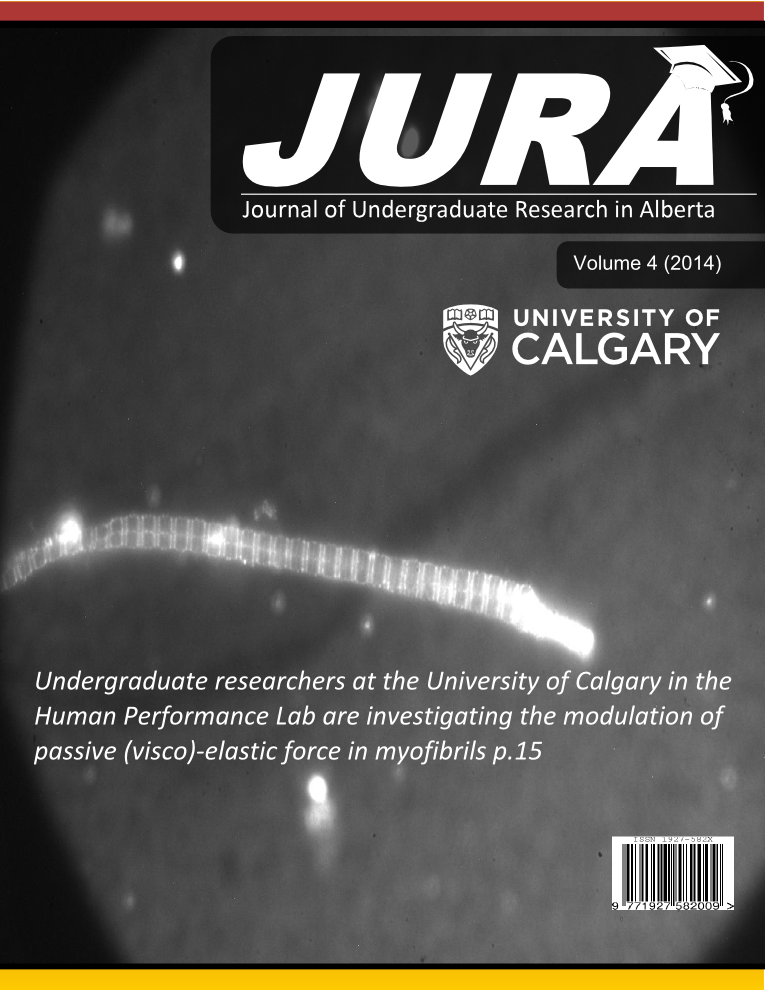No Evidence for S Isotope Fractionation During SO2 Oxidation at a Continental Location
Keywords:
Isotopes, Fractionation, Sulfur, AtmosphereAbstract
Abstract
Introduction
Sulfur isotope fractionation during SO2 oxidation has been shown to occur in laboratory experiments [1] but this has not been observed in whole air samples [2]. Here we replicate the laboratory experiments in a systematic manner using ambient air.
Methods
Particulate matter and SO2 in ambient air were collected at Calgary in the fall of 2012 using high volume samplers and impingers. Atmospheric SO2 and SO4 concentrations and isotope characteristics were determined.
Results
Variations in concentrations did not reflect changes in δ34S values, suggesting the independence of δ34S from SO2 and SO4 concentrations in the atmosphere. d34SSO2 values for high volume samples was, on average, +13.2‰ ± 0.2‰. SO2 from the impinger method over the same sampling period yielded a δ34SSO2 value of +14.0‰ ± 0.2‰. δ34SSO4 values ranged from +9.9‰ ± 0.5‰ to +15.3‰ ± 0.2‰.
Discussion and Conclusions
δ34SSO2 values from the high volume and impinger samples were similar (+13.2‰ versus +14.0‰, respectively) and shows d34S values from these collection methods are equivalent. Differences between the impinger and high volume sampler d34S values for SO2 and submicron aerosol sulfate were used to gauge sulfur isotope fractionation. Standard deviations for differences were greater than averages (Δd34SSO2 avg.= -0.80‰, s=1.76‰; fine Δd34SSO4 avg.=+0.28‰, s=5.15‰), indicating little to no fractionation. Additionally, δ34SSO2 and δ34SSO4 values were compared to the maximum percent SO2 that may have reacted to form SO4. No pattern was evident so the conclusion is that sulfur isotope fractionation in ambient air is negligible under the conditions sampled.
Literature
1. E. Harris, B. Sinha, P. Hoppe, S. Foley, S. Borrmann, Atmos. Chem. Phys. 12, 2012.
2. A.L. Norman, H.R. Krouse, J. MacLeod, Air Pollution Modeling and Its Application
XVI, 2004.
Downloads
References
2. H.R. Krouse, V.A. Grinenko, in Scope 43: Stable Isotopes, John Wiley & Sons, Ontario, Toronto, 1991, p.p.1-21.
3. W.S. Macdonald, B.F. Bietz, paper presented at the Acidifying Emissions Symposium, Red Deer, AB, April 15-17, 1996.
4. B.J. Finlayson-Pitts, J.N. Pitts Jr., in Atmospheric Chemistry: Fundamentals and Experimental Techniques, Wiley, New York, NY, 1986, p.p. 1098.
5. J.G. Calvert, W.R. Stockwell, in SO2, NO, and NOx Oxidation Mechanisms: Atmospheric Considerations, Butterworth Publishers, Ontario, Toronto, 1984, p.p. 1-62.
6. E. Harris, B. Sinha, P. Hoppe, S. Foley, S. Borrmann, Atmos. Chem. Phys. 12, 2012.
7. A.L. Norman, W. Belzer, L. Barrie, J. Geophys. Res. 109, 2004.
8. A.L. Norman, Atmos. Chem. Phys. Discuss. 9, 2009.
9. A.L. Norman, H.R. Krouse, J. MacLeod, Air Pollution Modeling and Its Application XVI, 2004.
10. A.M. Seguin, A.L. Norman, S.J. Eaton, M.A. Wadleigh, S. Sharma, Atmospheric Environment 44(9), 2010.
11. H.H. Ku, J. Res. Nat. Bur. Stand – C. Engineering and Instrumentation 70(C), 1966.
Downloads
Additional Files
Published
Issue
Section
License
Authors retain all rights to their research work. Articles may be submitted to and accepted in other journals subsequent to publishing in JURA. Our only condition is that articles cannot be used in another undergraduate journal. Authors must be aware, however, that professional journals may refuse articles submitted or accepted elsewhere—JURA included.


